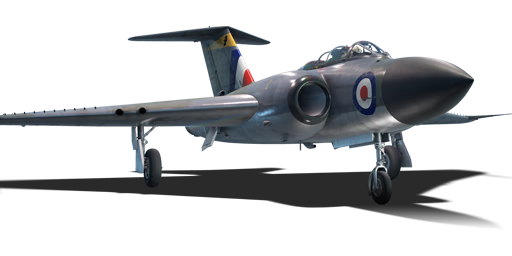



After the end of WWII, the British government outlined the threat of strategic jet bombers and their ability to deliver nuclear weapons. The threat reached a critical level during 1947, when the Soviet Union's first strategic jet bombers like the IL-28 were nearing introduction to service. This caused the Air Ministry to issue Specification F.44/66, requiring a jet-powered, two-seat night fighter with radar capability. This aircraft was required to intercept enemy bombers at heights of up to 40,000 feet. It would also have to reach a maximum straight-line speed of 972 km/h at this height, and be able to perform rapid scrambles and ascents to attain the required altitude within ten minutes of engine ignition on the ground. Out of all the competing aircraft for this specification requirement, the renowned Gloster Aircraft Company, whom had already made a name for themselves shortly before by creating the Meteor, Britain's only operational jet fighter during WWII, would present the Gloster Javelin, a high-power interceptor that fulfilled the requirements. This design beat out the competition from de Havilland and was chosen by the Air Ministry in the early '50s to enter service under the FAW (Fighter, All Weather) designation class.
Introduced in Update 1.85 "Supersonic", the Javelin builds upon gameplay principles found in the earlier Meteor family, while also introducing new concepts that will become commonplace in British fighter-interceptor aircraft later down the line, such as the Lightning F.6 and the Tornado F.3, namely the high engine power at the sacrifice of manoeuvrability compared to adversaries. The Javelin, while not having the best flight performance, makes up for it in its firepower, wielding the strength of not only the powerful ADEN 30 mm cannons, but also the Firestreak air-to-air missiles, and a strong radar system for its battle rating.
flaps
flaps
flaps
brake
2 × Firestreak air-to-air missiles
4 × Firestreak air-to-air missiles
4 × Firestreak air-to-air missiles












Flight performance | |
|---|---|
Survivability |
|---|
Weaponry | |
|---|---|